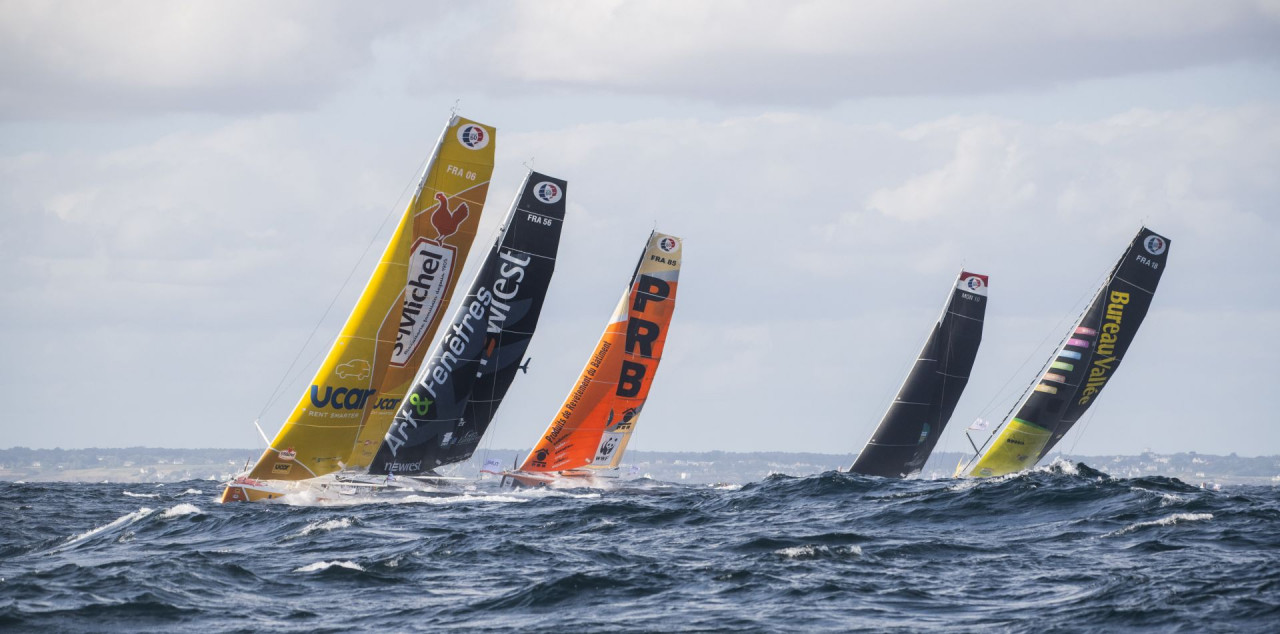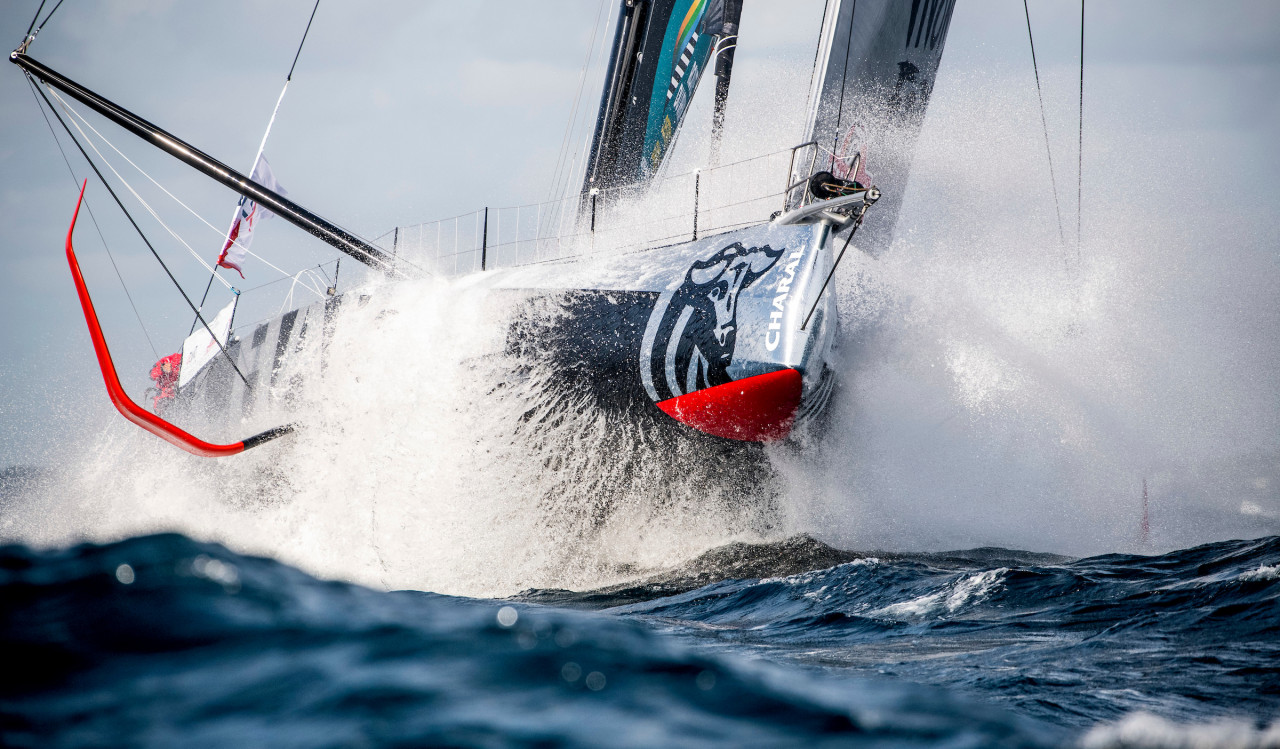Gildas Morvan takes a look at the IMOCA class

An experienced sailor having in particular taken part 21 times in the demanding Solitaire du Figaro, Gildas Morvan gives us his analysis of the IMOCA class as an expert and outsider...
An experienced sailor having in particular taken part 21 times in the demanding Solitaire du Figaro, Gildas Morvan was assistant to the race director, Jacques Caraës at the Azimut Challenge last weekend in Lorient. He was able to take a close look at the performance of the various IMOCAs taking part. He gives us his analysis of the event and more generally look at the class as an expert and outsider.
Gildas Morvan has an exceptional experience of Figaro racing, having taken part 21 times in the Solitaire du Figaro (second in 2008, third in 1999, 2000, 2001), four times French offshore solo racing champion (2000, 2008, 2009, 2013), and winner of the Transat AG2R (with Charlie Dalin in 2012). He also shone on other boats in particular on IMOCAs with Roland Jourdain and Jean Le Cam (4th in the Transat Jacques Vabre in 2007).
As a keen observer of racing, he was able to watch the sailors and their boats to see how they performed. Here is his analysis.
A lively class
“The IMOCA class is doing well and is very lively. It always brings together a great fleet of boats at each event on its calendar. We saw that at the Azimut Challenge where there were 15 boats and there will be around twenty for the Route du Rhum. Theprogramme is developing and the new class world championship (the IMOCA Globe Series) is interesting, as it encourages the sailors to sail more between two editions of the Vendée Globe. It’s interesting in terms of racing, but also in terms of safety, as the skippers will be able to compete in the solo round the world race having gained a lot of experience.”
The foils proved how efficient they were in the Vendée Globe
“When Safran, the first IMOCA with foils, was launched in 2015, there were people who remained sceptical. Everyone believed that these appendages would be a bonus in terms of performance, but there were doubts about their reliability and their ability to withstand a round the world race. In the 2016-2017 Vendée Globe, four foilers took the top four spots. And Alex Thomson even finished second after breaking a foil fairly early on in the race. The Vendée Globe set the tone. The foils proved they were efficient.”
Big foils versus little foils
“In the Azimut Challenge, we were able to see the latest changes to foils on PRB and Charal, which have bigger and longer foils, which raise the boats up even more enabling them even to take off. It’s not down to chance if in the strong winds, these IMOCAs won the two events in the Azimut Challenge: PRB dominated the 24-Hour race and Charal was the fastest in the speed runs.
In the big race, PRB was around 6 miles behind Initiatives-Cœur (Sam Davies) before the final 100-mile downwind run in strong winds and the former finished two miles ahead, so in other words was on average 8 % faster than Sam over this stretch. The fact that he has larger foils was clearly an advantage for Vincent. Sam Davies and Yann Eliès, who finished second and third in the big race in the Azimut Challenge, have boats that are fitted with foils from the previous generation and which are smaller.
Increasing the surface of the foils seems to be the solution for the future, and is a logical development. In fact, Sam Davies plans to fit bigger appendages next season. For the others, it will be a question of their budget, as larger foils are bound to cost more.”

Impressive Charal
“Like everyone else, I was impressed by Charal during the Azimut Challenge. The pictures speak for themselves. The boat really takes off. She stays up there flying for seconds and reaches speeds close to multihulls. It’s been said that with foils on the rudders, she could really fly, just like the new monohulls in the next America’s Cup (This is not allowed by IMOCA rules, editor’s note). Charal tends to rear up when fully powered, but Jérémie Beyou will gradually find the right adjustments to stabilise the boat’s trim when flying. Charal has placed the bar very high up and it’s going to be very interesting to see the other new generation IMOCAs appear.”
A huge gap between foilers and non foilers
“The negative point about this rapid progress with the appendages is that the gap between foilers and non-foilers is growing. Paul Meilhat sailed really well in the Azimut Challenge, but could not hold on towards the end of the race, when the conditions favoured the IMOCAs with foils. If we’re looking at a transatlantic or round the world race, it is becoming very hard or even impossible for the IMOCAs with straight daggerboards to win.”
Teams info
Pip Hare's perspective on The Transat CIC
IMOCA skippers who are not participating in The Transat CIC are like us, glued to the map and race updates to analyze and understand the performances of their peers in the class.
•••IMOCA Race Report #2 I The Transat CIC - Day 6
At the halfway point, Conrad Colman, skipper of the IMOCA MS Amlin, gives us an update on what's happening at sea. Strategy, weather forecasts, conditions on board... you'll know it all!
•••